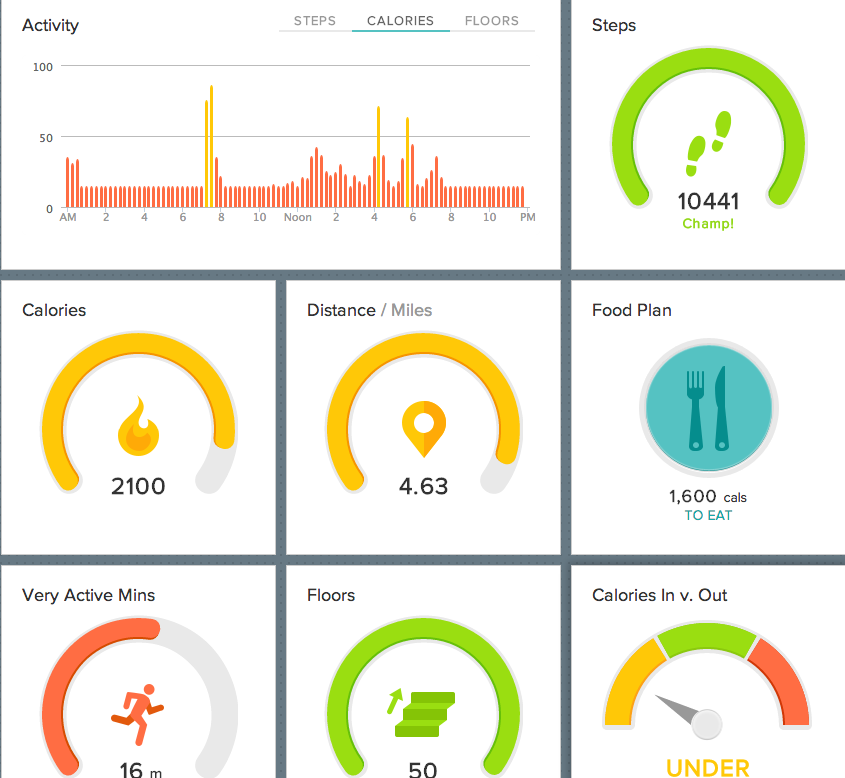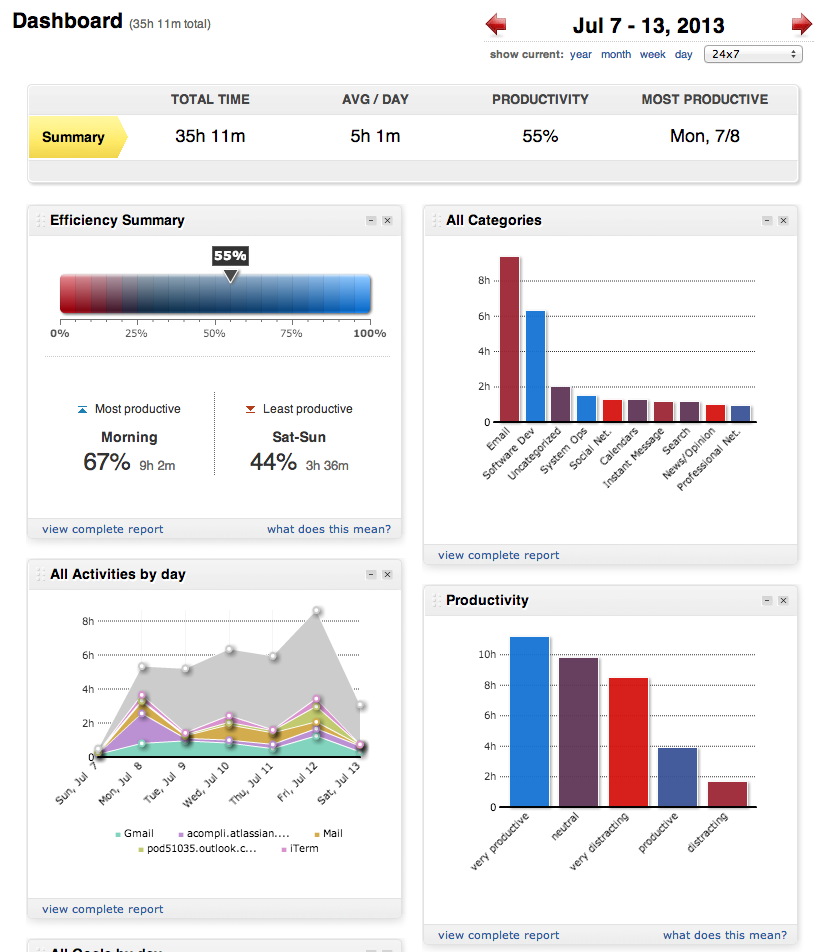 One of my favorite questions to ask people is, “How many hours a week do you work?” The answers tell us a lot about ourselves.
One of my favorite questions to ask people is, “How many hours a week do you work?” The answers tell us a lot about ourselves.
First, hardly anyone it seems, works a 40-hour week. We are all putting in a minimum, an absolute bare minimum, of 60 hours. The start-up folks? Oh, they’re working 80-hour weeks. Entrepreneurs? Yeah, 90, for sure. At least. Maybe 100.
You’re probably nodding your head right now. Yeah, you’re thinking. That’s right. I work around 90 hours a week.
Actually, if you’re reading this, I’m pretty sure you don’t work 90 hours a week. How can I be so sure? Well, if you’re working five days a week, that means you’re putting in at least 18 hours every day. You also have to sleep – I’ll give you at least 5 hours – eat, shower, get dressed, use the bathroom, and so on, so there’s no way you’d have time to read this post. We haven’t even figured in the time it takes you to get to and from work.
Maybe you’re super-committed to your job, and you somehow prioritize working weekends over living life. Even so, you’d still need to be working a minimum of 13 hours every day of the week to hit that 90-hour mark. Really? Seven days a week, you’re putting in 13 hours? Every day? Dude, I don’t even want to know what your marriage looks like.
“Measure twice”- so you know exactly what to cut
I believe you work a lot. Just not as much – maybe not nearly as much – as you think you do. You’re probably at work 10-12 hours a day, 5 days a week. So that’s 50 - 60 hours that you’re in the office… but how much of that time is actually being spent on productive work?
I use a Fitbit to track how active I am during the day. When I first got it, I was sure I was walking the recommended 10,000 steps a day. I was wrong. The Fitbit device gave me a reality check: I was walking about 3500 steps daily. But once I started tracking my steps, I changed my behavior. I’d take twenty minutes to hit the treadmill, or take a walk outside to clear my head. I stopped hunting for close parking spaces and started walking to meetings whenever possible. I also found that walking during phone meetings and conference calls were easy ways to add a few thousands steps with almost no effort.
 If you’re not measuring the work you do, you’re guessing at how much you’re doing. And you’re probably wildly overestimating. Yes, even though you are thinking to yourself that even if everybody else in the world guesses wrong, you personally don’t, because you are awesome. You know that you put in 90 hours of solid work a week. You are certain.
If you’re not measuring the work you do, you’re guessing at how much you’re doing. And you’re probably wildly overestimating. Yes, even though you are thinking to yourself that even if everybody else in the world guesses wrong, you personally don’t, because you are awesome. You know that you put in 90 hours of solid work a week. You are certain.
You are wrong.
Why reading productivity blogs isn’t productive
Let’s start by defining work. Sitting in front of a screen is not work. What you’re doing now, reading this post, is not work. You are not making money for your company by reading this post. You are not moving closer to your goals by reading this post. (Unless, of course, you goal is to read every word I’ve ever written. But I still don’t think that you can actually make money from that. Feel free to send me a detailed business plan to prove me wrong.)
Start using tools to track your work, and you’ll quickly see how much of your time is spent being productive – and how much is spent simply sitting in front of a screen. There’s a fantastic app that can track everything you do at your computer, and it’s called RescueTime. You can set it up in under two minutes, and you don’t have to do anything else – it just does its thing, quietly in the background. And then, once a week, the magic happens: RescueTime sends you a report that shows how you spent your time, how productive you were, and how you compare to other users.

Prepare to be horrified. You will undoubtedly discover that you work far, far less than you think. You may even find that you are at the office significantly less than you thought. You leave home at 8, get to the office by 9, sit down at your desk at 9:30 (well, you have to grab coffee from the cart, check in with your project team, say hi to Joe and ask when you’ll be reimbursed for that trip you took last month… it all takes time), and leave for the day at 7. So that’s… Well, technically, that’s 10 hours in the office. But there was lunch. (That was a business lunch!) And on Thursday you had to go to your kid’s school thing, so you were out of the office for 3 hours. But that hardly ever happens. Except that last week, you had that dentist appointment, and that was as hour. Maybe an hour and a half. And the week before, the contractor came to review the plans for the kitchen demo.
The point isn’t to say that you shouldn’t do those things. Rather, the point is to make you aware of the time you spend at work, and the time you spend working (two different things, remember), and how much you get done in that time. If you’re consistently hitting deadlines and you’re actually only putting in 6 hours of work daily, maybe start planning your day around 6 hours of focused work. On the other hand, if schedules are constantly slipping, this exercise could show you why.
Admitting you have a problem is the first step
Once you’re tracking your time, you can start to change your habits. Because, at the end of the day, it’s what you do with this information that matters. If you choose to simply explain to me why you absolutely have to spend 18 hours a week on social media, you’re not going to make any real progress. As Neil Patel says, work on making improvements to get ahead.
Here are a few quick ideas:
Do you lose an hour and a half of work time every time you take a 30-minute lunch break (waiting for elevators, waiting in lines, getting back into the swing of things, and so on)? Make it a habit to eat lunch at your desk twice a week. Some middle of the day meetings are unavoidable – for example, your children’s school activities. But try moving other meetings to first thing in the morning or late in the afternoon so that you don’t have to interrupt yourself twice. Can’t figure out how to fit in a workout and work? Switch to a treadmill desk – at least for part of the day. If you’re losing time to simple, repeatable tasks that don’t require your expertise, learn to delegate and outsource effectively.
We’ll talk more in-depth about these ideas to recapture your time, your focus and perhaps your sanity– in a Part II to this post.
Kevin Henrikson
Kevin Henrikson leads engineering for Microsoft Outlook iOS/Android. Previously, he co-founded Acompli and ran engineering prior to an acquisition by Microsoft in 2014 for $200M. Before Acompli, he was an Entrepreneur-in-Residence for Redpoint Ventures, a venture capital firm for early stage technology companies.